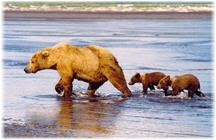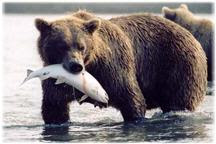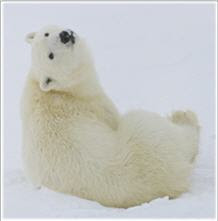Harbor seals (Phoca vitulina), are “true seals” of
the Phocidae family, also sometimes called “common” or “hair”
seals. They are covered with short, stiff, bristle-like hair.
Coloration varies, but two basic patterns occur: light gray
sides and belly with dark blotches or spots, or a dark
background with light rings. They can be distinguished from
other pinnipeds, such as fur seals and sea lions, by the
absence of external ear flaps; only a small hole (the external
pinnae, or opening to the ear canal) is visible on either side
of their head.
When on land, harbor seals move awkwardly by
undulating in a caterpillar-like motion because their pelvic
bones are fused, preventing them from moving their hind
flippers under their pelvis to walk. In the water they are
graceful and efficient swimmers, using their fore flippers as
rudders and their hind flippers for propulsion by clasping
both hind flippers together, splaying webbed toes and moving
the large hind flippers side to side.
Harbor seals weigh about 24 pounds (11 kg) at birth and gain
weight rapidly during a month-long suckling period; perhaps
doubling their weight. They can reach five to six feet
(1.5-1.8 meters) in length. Average weight for adults is about
180 pounds (82 kg); males are somewhat larger than females and
can weigh up to 285 pounds (129 kg).
Subscribe to:
Post Comments (Atom)






 Alaska Time
Alaska Time









































No comments:
Post a Comment